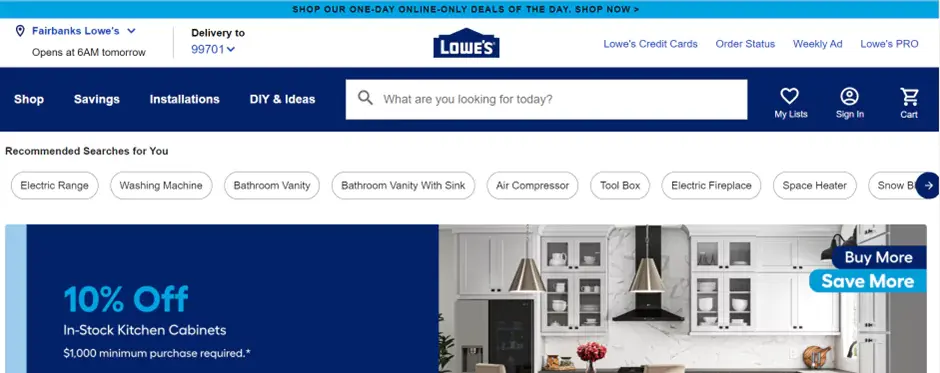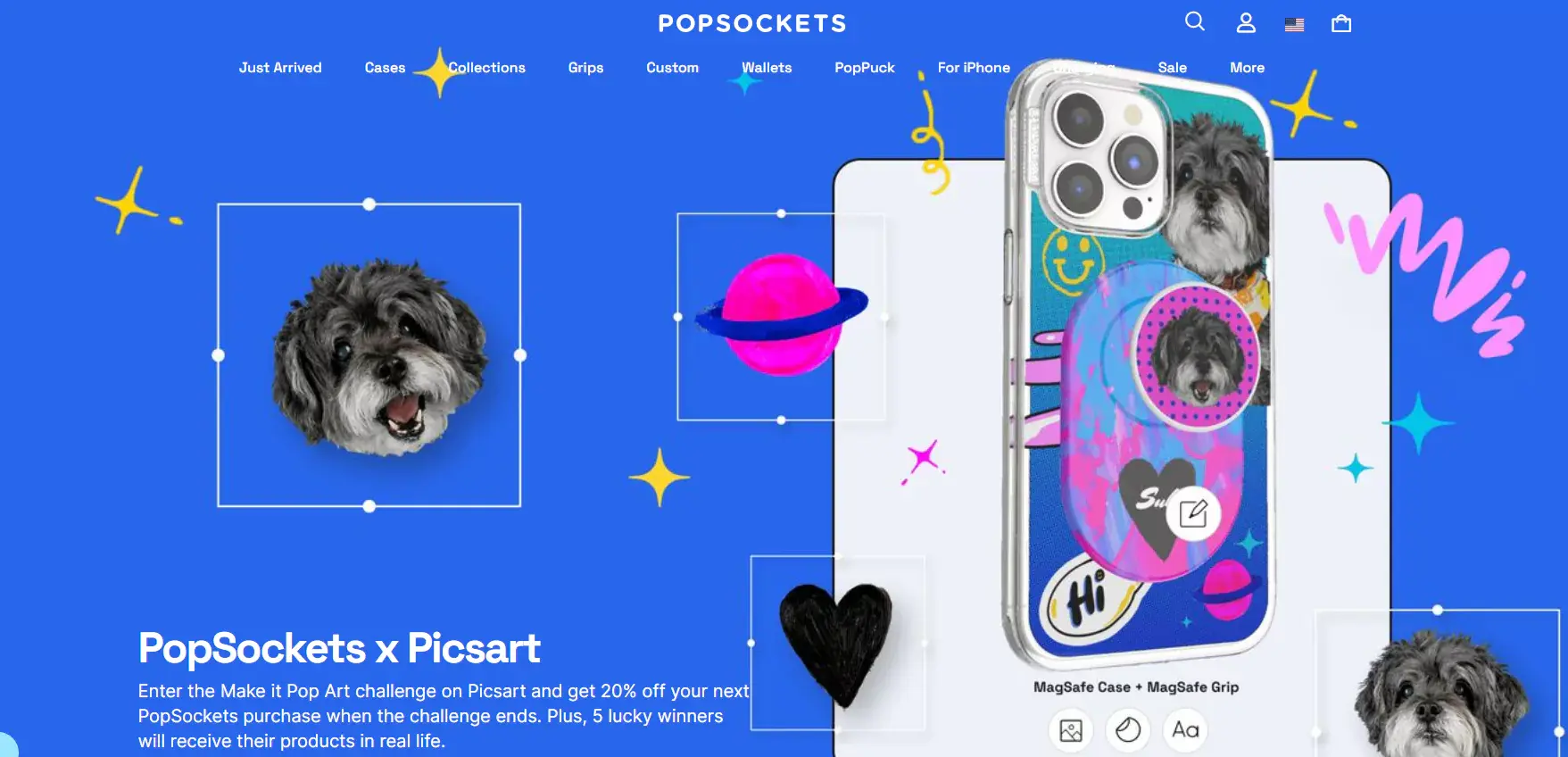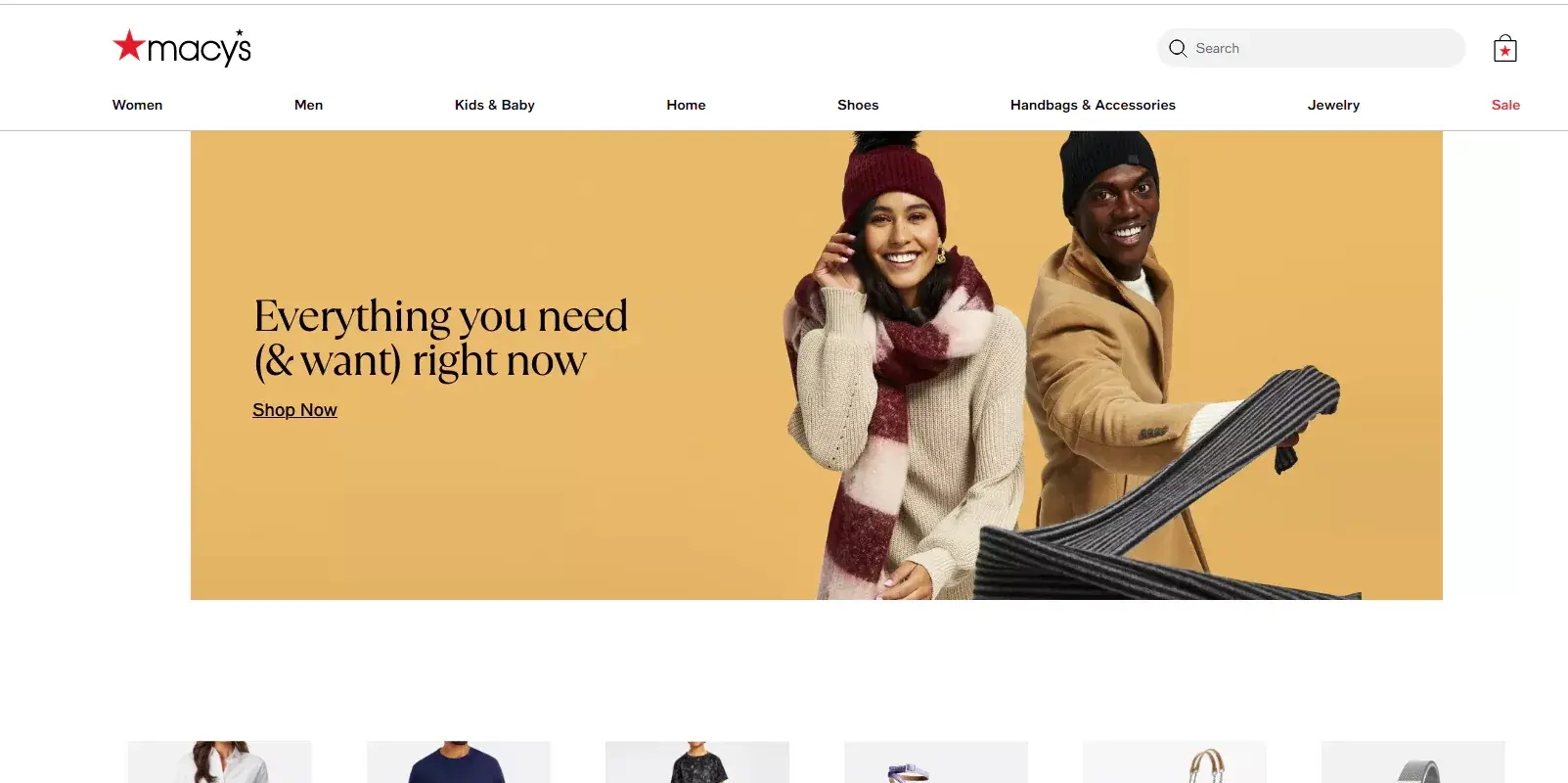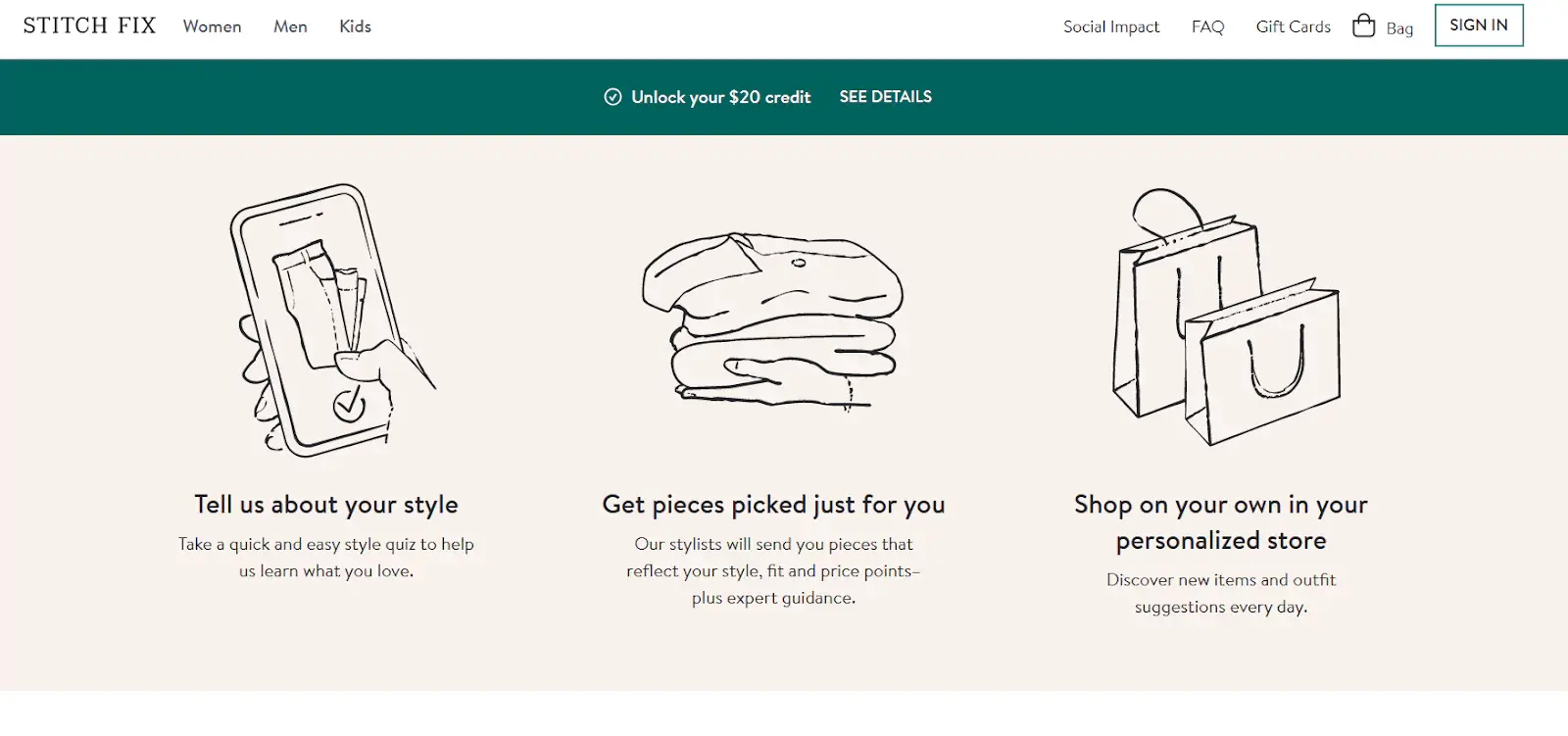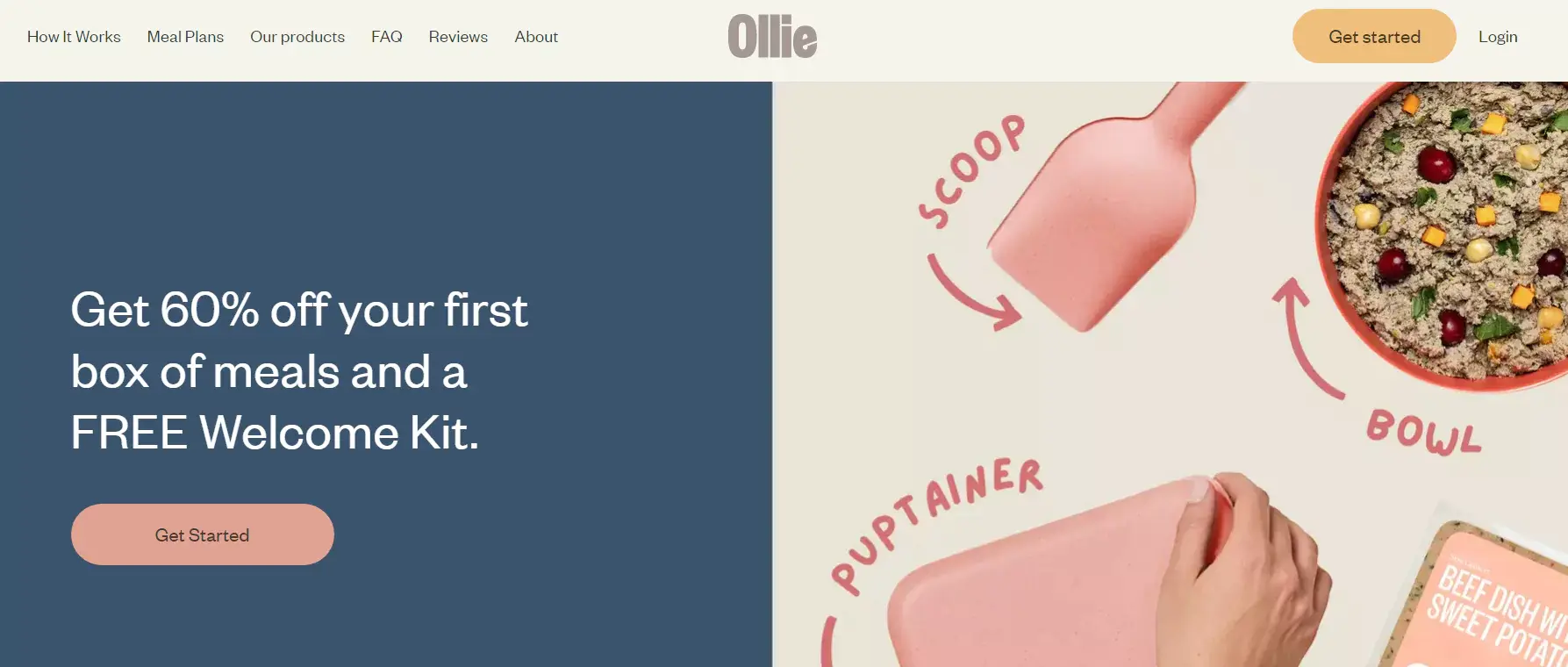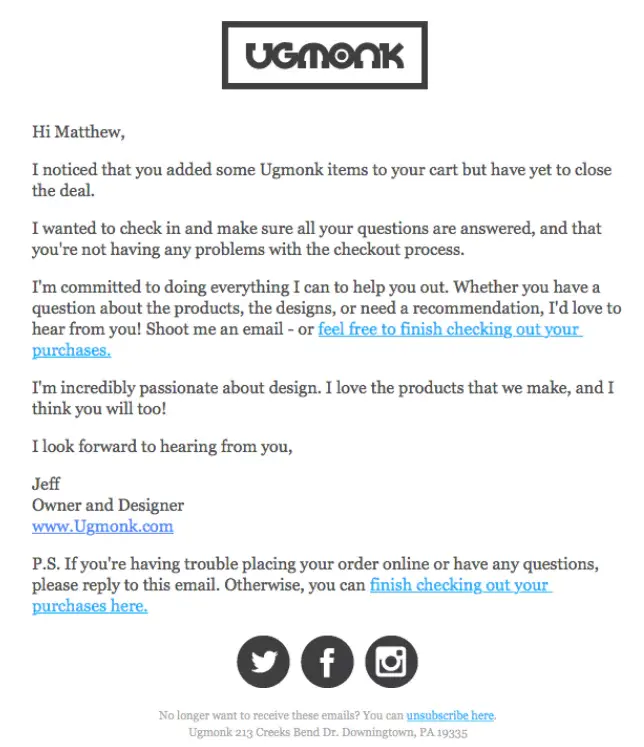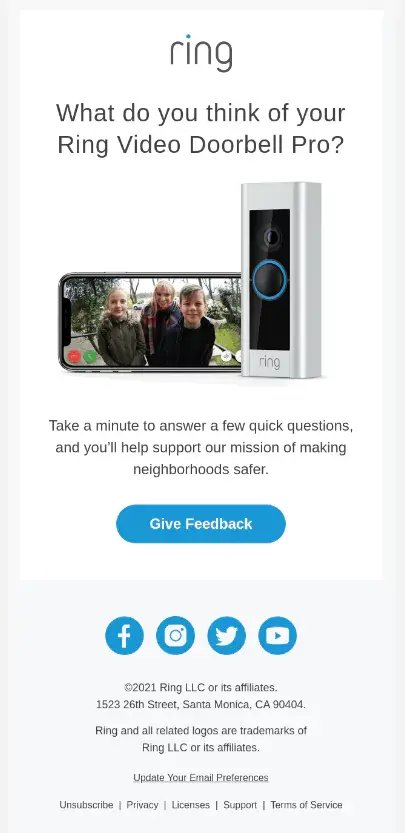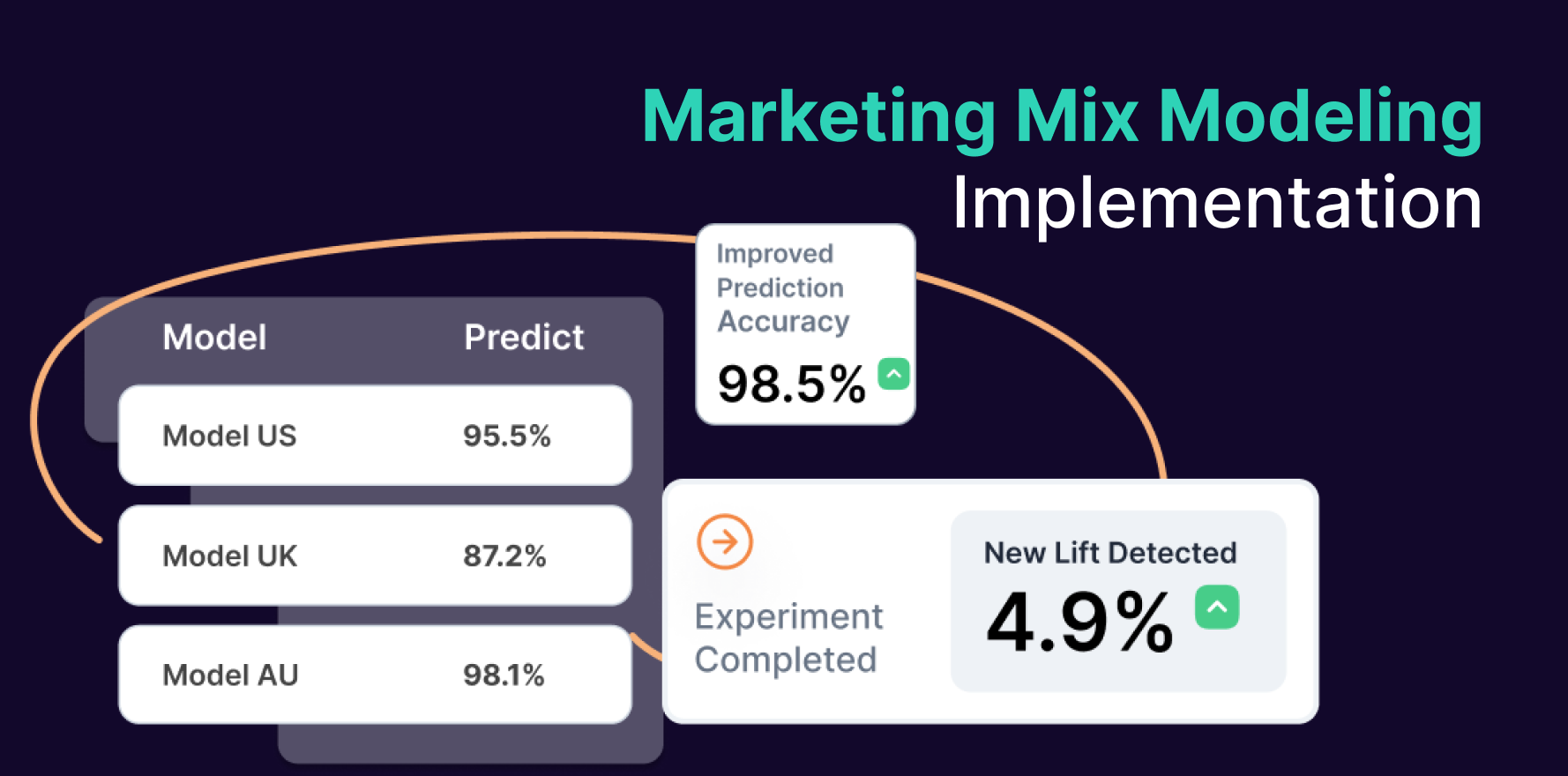The key to success in today’s competitive ecommerce landscape is emphasizing customer engagement and personalizing each customer’s buying experience. Also, adopting an omnichannel approach allows D2C brands to target customers precisely where they are.
Away, which was established in 2015, challenges conventional notions regarding what constitutes appropriate luggage. By focusing on building relationships with its followers, AWAY also keeps its customers engaged. On social media, Away frequently advertise conventional giveaways or contests. While demonstrating that they are engaged in what their customers are doing and always put them first, this original communication strategy fosters brand loyalty.
Stitch Fix was founded in 2011 to solve a real problem in the apparel industry. With Stitch Fix, customers had a new, less time-consuming option for acquiring their preferred clothes and accessories. To receive curated clothing delivered to their doorstep, customers only need to answer questions about their style. Over 3.5 million people use Stitch Fix, and the company sees 17% annual growth in its customer base.
This guide covers everything you need to know about customer engagement in ecommerce, from understanding your target audience to utilizing email marketing and social media. Following these strategies, you can increase customer satisfaction, build brand loyalty, and drive more sales. Let’s dive in!
What is customer engagement?
Customer engagement refers to the level of interaction and involvement a customer has with a company, its products, or its services. It is the process of creating an emotional connection between a brand and its customers. Customer engagement can encompass various activities, such as responding to customer inquiries, providing personalized experiences, and promoting customer loyalty. In ecommerce, this is why customer engagement is essential; it can drive repeat purchases, increase customer satisfaction, and improve overall brand perception. By engaging with customers and building solid relationships, ecommerce businesses can create a positive customer experience and establish a competitive advantage.
Continue reading: How To Engage Customers at Each Stage of Customer Lifecycle?
Importance of customer engagement for ecommerce businesses
Customer engagement is essential for ecommerce businesses for several reasons:
1) Increases customer loyalty:
Engaging with customers on a personal level helps to build trust and emotional connections, leading to increased customer loyalty. Loyal customers are more likely to make repeat purchases, provide positive word-of-mouth recommendations, and remain loyal to the brand over time. It is excellent organic marketing and an effective customer retention strategy.
2) Improves customer satisfaction:
To increase customer satisfaction in ecommerce, constant customer engagement is necessary. Engaging with customers and providing a personalized shopping experience can significantly improve customer satisfaction. Satisfied customers are more likely to positively perceive the brand, leading to increased customer loyalty and repeat purchases. Consistent customer engagement is essential for ecommerce to improve customer satisfaction.
3) Drives sales:
By engaging with customers and providing a positive shopping experience, ecommerce businesses can increase the likelihood of customers making a purchase and potentially increase average order value size. Customers could make better purchasing decisions if they were engaged throughout the entire purchase cycle, which would boost ecommerce sales.
4) Supports better decision-making:
Engaging customers through surveys, focus groups, or feedback mechanisms can provide valuable insights into their preferences and needs, informing business decisions and product development. Engaging customers after they have made a purchase is a good way to build relationships and give valuable feedback that is needed to improve ecommerce services.
5) Differentiates from competitors:
In today’s crowded ecommerce market, providing a personalized and engaging shopping experience can help businesses stand out from the competition and create a competitive advantage. Customers typically respond to the brand through consistent interaction and engagement because they feel valued.
By prioritizing customer engagement, ecommerce businesses can create a positive customer experience and build lasting relationships, driving both short-term and long-term success.
Understanding your target audience
Before you can start engaging with your customers, you need to have a clear understanding of who they are. To achieve this, you can conduct demographic research and create customer personas. This research will help you to understand their needs, preferences, and behaviors. By mapping out the customer journey, you can also gain insights into customers’ various touchpoints with your brand, which will inform your customer engagement strategy.
Customer engagement strategies for ecommerce
Types of customer engagement strategies to follow up for your ecommerce brand:
1) Personalization:
One of the most effective customer engagement strategies is personalization. By presenting customers with personalized content, recommendations, and offers, you can create a unique and enjoyable shopping experience.
Lowe’s, an American home improvement retailer shows recommended searches to its first-time website visitors. This is a great way to guide customers in starting their product exploration journey at your store.
customer-engagement-strategies-personalize-like-lowes
Image source: Lowe’s
2) Interactive content:
Another way to engage customers is by using interactive content, such as quizzes, polls, and games. It can help to increase customer engagement and provide valuable insights into customer preferences.
Mobile accessory brand PopSocket offers many interactive activities such as polls, challenges and games on its website to engage with customers.
customer-engagement-strategies-create-interactive-content-like-popsocket
Image source: PopSockets
3) Gamification:
Gamification involves incorporating game design elements into your customer engagement strategy. It can include rewards, leaderboards, and challenges, which can help to increase customer engagement and drive repeat purchases.
Casper promotes their brand and encourages current customers by providing a $75 gift card to existing customers and a 25% discount to newly referred customers.
customer-engagement-strategies-gamification-like-casper
Image source: Casper
4) Social proof:
Social proof is a powerful customer engagement tool. By showcasing customer reviews, ratings, and testimonials, you can provide social proof that your products and services are high-quality and trustworthy.
Macy’s is a major retailer of clothing and accessories that uses customer reviews, ratings, and testimonials as social proof of its quality.
customer-engagement-strategies-add-social-proof-like-macys
Image source: Macy’s
5) Customer loyalty programs:
By offering customer loyalty programs, you can incentivize customers to return to your store and make repeat purchases. It can include rewards, discounts, and special promotions.
Innovative apparel brand StitchFix took its business model to new heights by offering a generous return policy and a comprehensive loyalty program.
customer-engagement-strategies-loyalty-program-like-stitchfix
Image Source: StitchFix
6) Customer reviews and feedback:
Encouraging customers to leave reviews and feedback is another effective way to engage with them. This can help you understand their needs and preferences and provide valuable insights for improving your customer experience.
All-natural dog food brand Ollie continuously strives to improve its services and products by encouraging customers to provide feedback and reviews.
customer-engagement-strategies-customer-feedback-like-ollie
Image source: Ollie
Improving the customer experience on your ecommerce website:
The customer engagement cycle does not end with making strategies but needs to be followed up with several components, such as creating a helpful website.
1) User-friendly design:
It is essential to have an ecommerce-appropriate website design to maintain the purpose and functionality. Customers spend a lot of time browsing, so it needs to be easy for them to get around. The product pages and catalog need to be strategically categorized for easy access.
2) Navigation and search functionality:
The foundation of a successful ecommerce site is a search function and straightforward navigation options. If an intuitive search algorithm that provides real-time suggestions helps customers find what they’re looking for, it significantly enhances the customer experience. The website’s architecture should make it easy for visitors to navigate.
3) Speed and performance optimization:
An ecommerce website is the first point of contact for customers, and it must work efficiently. Having a fast load time and excellent site performance helps to reduce bounce rates while providing the best customer experience. Various site performance optimization processes have a direct impact on your search engine rankings, conversion rates, and customer retention.
4) Mobile optimization:
A mobile-friendly website for your ecommerce is critical for maximizing outreach potential and reaching a large audience. Now that a large number of customers use smartphones, the world is moving towards a digital universe. A mobile interface that is optimized and easy to use would keep customers engaged and significantly increase conversion rates.
5) Customer service and support:
To increase customer retention, consistent customer service and support are crucial. Customers would be able to quickly resolve issues and make better purchasing decisions with the assistance of live customer services like live chat or a live helpline. Instant customer satisfaction is mutually beneficial to help build long-lasting trust and cordial relationships.
An ecommerce website is a primary interface for visitors and potential customers, and its optimal performance determines customer experience, bounce rate, customer retention, and better sales. Improve ecommerce website speed, performance, design, and layout to improve customer experience.
Continue reading: 7 Ways Automation Can Improve Customer Experience
Utilizing email marketing for customer engagement
The customer engagement framework requires putting an effort into email marketing concerning these elements:
1) Segmentation and targeting:
Segmenting and targeting email campaigns based on behavioral and RFM aspects will enable you to provide personalized replies and relevant email marketing initiatives. You can give exclusive personalized customer email experiences if you categorize your customers into groups based on their behavior or by analyzing their purchase patterns. It is an integral part of the customer engagement model for customer retention.
2) Personalized email campaigns:
A personalized email stands out and shows customers that you care about them. Customers are more likely to relate to brands when they feel heard and personally communicated. Using customer data such as purchase history, interests, cart status, and so on, along with their name in emails, is a great way to create personalized email campaigns.
3) Abandoned cart email campaigns:
As a sales recovery strategy, abandoned cart emails are sent to customers who have added items to their cart to entice them to return and complete their purchases. They would be more likely to complete the purchase if the email included a friendly message and a description of the items in their cart.
Example: Ugmonk sent out an abandoned cart email with customers’ names and offered service to any issues faced in a friendly message.
send-abandonded-cart-emails-like-ugmonk-for-customer-engagement
4) Win-back email campaigns:
An effective win-back email campaign can assist your ecommerce in re-engaging lapsed customers. These lapsed customers may have previously engaged with your band in some way or purchased from you. The campaign majorly depends on your ecommerce business, products, and customer base. It has the potential to significantly lower your unsubscribe rate and reactivate lapsed customers into active customers.
The readers of this email from ATG Stores are urged to check out the brand-new services and brands that have been added to their website.
send-winback-emails-like-atg-stores-for-customer-engagement
5) Post-purchase follow-up emails:
Post-purchase follow-up emails can be used for various purposes, depending on what is most important to your ecommerce business, such as to express appreciation for the purchase, gather feedback, remind customers to replenish, and suggest similar products. In addition to increasing the customer lifetime value, it is essential to keep the customer relevant and informed.
Here’s an excellent example of a feedback request from Ring because it addresses the brand’s values and the product’s purpose.
send-post-purchase-emails-like-ring-for-customer-engagement
By keeping in touch with your customers and site visitors on a regular basis, email marketing enables ecommerce businesses to achieve excellent customer engagement. It is essential to send out emails about the most recent products and promotions to previous customers. Customer engagement with their experience and loyalty to your brand is enhanced by email marketing.
Building customer engagement through social media:
Social media is one of the examples of customer engagement; here is how to build your brand using it:
1) Social media listening and engagement:
Social media networks such as Instagram, Facebook, Twitter, etc., must have customer engagement platforms for your ecommerce. It will help you reach out to your customers and attract new potential customers. Social media listening will help improve your ecommerce with direct feedback from active customers as well as potential.
2) Influencer marketing:
Collaboration with influencers will greatly improve the reach of your ecommerce brand on social media platforms and build an excellent outreach for customer engagement. Influencer marketing helps to target your brand’s awareness to a particular audience that aligns with your ecommerce business.
3) User-generated content:
User-generated content is one of the most powerful online marketing campaign strategies, particularly for ecommerce businesses. By promoting the brand’s products and services, positive user-generated content from actual customers increases your ecommerce social media engagement and reach. Customers’ external validation encourages other potential buyers.
4) Social media advertising:
Your ecommerce sales and brand awareness will increase significantly if you run paid social media ads campaigns to a targeted audience. Through promotions and targeted ads, social media ads enable your ecommerce business to interact directly with customers and build an effective customer engagement strategy.
A higher level of social media engagement indicates that your customers have a stronger relationship with your ecommerce. As a result, more opportunities exist to build brand loyalty, increase informal referrals, and improve sales.
Measuring the success of your customer engagement efforts:
Keep these aspects in perspective when you want to learn how to measure customer engagement:
1) Key metrics to track:
Running a customer engagement campaign is just as important as measuring its success based on a number of key metrics. You can improve the parameters where it is lacking and concentrate on the parameters where it excels by continuously tracking your customer engagement metrics – KPIs (Key performance indicators).
2) Customer satisfaction surveys:
To set your ecommerce business apart from the competition, customer satisfaction surveys are an essential part of the customer engagement process. It measures how satisfied customers were with your ecommerce product or service as a whole. You can improve your product, service, and customer experience in general with the feedback from the survey.
3) A/B testing:
A/B testing or split testing enables ecommerce to create an effective site design, content, and layout. Testing allows you to improve customer engagement, increase conversion rate and reduce bounce rates. A/B testing is used by large ecommerce websites to improve customer experiences and services.
4) Continuous optimization:
It is necessary to constantly adapt to the ever-changing preferences and needs of customers. Since customer engagement is an ongoing process, it is necessary to have an efficient Continuous optimization measure in order to determine which strategies work best. You are ensuring that your ecommerce is adapting to the shifting requirements of customers by continuously testing, personalizing, and optimizing.
Measuring customer engagement efforts based on various metrics is critical for ecommerce businesses to provide a positive customer experience. To achieve a higher customer success rate, these metrics allow ecommerce to improve the parameters where it falls short and focus on the parameters where it excels. It is how to increase customer engagement with different factors in the process.
Conclusion
In ecommerce, customer engagement is crucial, as evidenced by the widespread success of numerous businesses. To increase sales and revenue, it is essential to engage and communicate with customers throughout their purchasing journey. The future of ecommerce is determined by being proactive and upfront with potential customers and interacting with customers who have already purchased from you. We recommend that customer engagement be an ongoing process demonstrating your ecommerce business’s value to customers. With the help of the above customer engagement examples and suggestions, you can personalize ways to make your customers feel appreciated and engaged beyond a single purchase.
You may also like
Essential resources for your success

